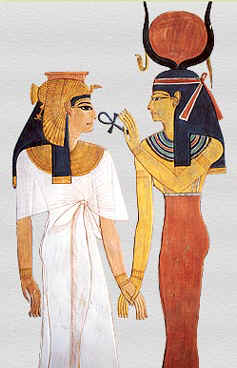Visual arts
(Redirected from Visual Arts)
The visual arts are a form of art that focuses on the creation of works that are primarily visual in nature. These include a wide range of artistic disciplines such as painting, sculpture, photography, printmaking, and more. Visual arts are a vital part of human culture and history, reflecting the values, beliefs, and experiences of societies throughout time.
History of Visual Arts[edit | edit source]
The history of visual arts is as old as humanity itself. From the earliest cave paintings to contemporary digital art, visual arts have evolved significantly over millennia.
Prehistoric Art[edit | edit source]
Prehistoric art includes the earliest known forms of art, such as the Lascaux cave paintings in France, which date back to around 17,000 years ago. These paintings depict animals and human figures and are believed to have had ritualistic or symbolic significance.
Ancient Art[edit | edit source]
In ancient civilizations, art was often closely tied to religion and power. For example, Ancient Egyptian art is characterized by its highly stylized and symbolic depictions of gods, pharaohs, and the afterlife. Similarly, ancient Chinese art, such as the intricate bronze vessels and jade carvings, reflects the cultural and spiritual beliefs of the time.
Classical Art[edit | edit source]
Classical art refers to the art of ancient Greece and Rome, which emphasized harmony, proportion, and balance. This period saw the development of realistic human figures and the use of perspective in painting and sculpture.
Medieval Art[edit | edit source]
During the Middle Ages, art was predominantly religious, with a focus on Christian themes. Illuminated manuscripts, stained glass windows, and frescoes were common forms of medieval art.
Renaissance Art[edit | edit source]
The Renaissance was a period of renewed interest in classical antiquity and humanism. Artists like Leonardo da Vinci, Michelangelo, and Raphael created works that emphasized realism, perspective, and the human form.
Baroque and Rococo Art[edit | edit source]
The Baroque period was characterized by dramatic use of light and shadow, intense emotion, and dynamic compositions. Artists like Rembrandt and Caravaggio were prominent figures of this era. The Rococo style, which followed, was more ornate and playful, with a focus on lightness and elegance.
Modern Art[edit | edit source]
Modern art encompasses a wide range of styles and movements that emerged in the late 19th and early 20th centuries. Impressionism, led by artists like Claude Monet, focused on capturing the effects of light and color. Cubism, pioneered by Pablo Picasso and Georges Braque, broke away from traditional perspectives and depicted subjects from multiple viewpoints.
Contemporary Art[edit | edit source]
Contemporary art refers to art produced in the late 20th and early 21st centuries. It is characterized by a diverse range of styles and mediums, including digital art, installation art, and performance art. Contemporary artists often address social, political, and environmental issues in their work.
Forms of Visual Arts[edit | edit source]
Painting[edit | edit source]
Painting is one of the most traditional forms of visual art, involving the application of pigment to a surface. It can be done on various surfaces such as canvas, wood, or paper, and can use a variety of mediums including oil, acrylic, and watercolor.
Sculpture[edit | edit source]
Sculpture involves creating three-dimensional forms by carving, modeling, or assembling materials such as stone, metal, or wood. It can range from small, intricate pieces to large public monuments.
Photography[edit | edit source]
Photography is the art of capturing images using a camera. It can be used to document reality or create artistic compositions. With the advent of digital technology, photography has become more accessible and versatile.
Printmaking[edit | edit source]
Printmaking involves creating artworks by printing, typically on paper. Techniques include etching, lithography, and screen printing. Each print is considered an original work of art.
Digital Art[edit | edit source]
Digital art is created using digital technology, including computer graphics, digital painting, and 3D modeling. It has opened up new possibilities for artists and has become an integral part of contemporary art.
Related Pages[edit | edit source]
Search WikiMD
Ad.Tired of being Overweight? Try W8MD's NYC physician weight loss.
Semaglutide (Ozempic / Wegovy and Tirzepatide (Mounjaro / Zepbound) available. Call 718 946 5500.
Advertise on WikiMD
|
WikiMD's Wellness Encyclopedia |
| Let Food Be Thy Medicine Medicine Thy Food - Hippocrates |
Translate this page: - East Asian
中文,
日本,
한국어,
South Asian
हिन्दी,
தமிழ்,
తెలుగు,
Urdu,
ಕನ್ನಡ,
Southeast Asian
Indonesian,
Vietnamese,
Thai,
မြန်မာဘာသာ,
বাংলা
European
español,
Deutsch,
français,
Greek,
português do Brasil,
polski,
română,
русский,
Nederlands,
norsk,
svenska,
suomi,
Italian
Middle Eastern & African
عربى,
Turkish,
Persian,
Hebrew,
Afrikaans,
isiZulu,
Kiswahili,
Other
Bulgarian,
Hungarian,
Czech,
Swedish,
മലയാളം,
मराठी,
ਪੰਜਾਬੀ,
ગુજરાતી,
Portuguese,
Ukrainian
Medical Disclaimer: WikiMD is not a substitute for professional medical advice. The information on WikiMD is provided as an information resource only, may be incorrect, outdated or misleading, and is not to be used or relied on for any diagnostic or treatment purposes. Please consult your health care provider before making any healthcare decisions or for guidance about a specific medical condition. WikiMD expressly disclaims responsibility, and shall have no liability, for any damages, loss, injury, or liability whatsoever suffered as a result of your reliance on the information contained in this site. By visiting this site you agree to the foregoing terms and conditions, which may from time to time be changed or supplemented by WikiMD. If you do not agree to the foregoing terms and conditions, you should not enter or use this site. See full disclaimer.
Credits:Most images are courtesy of Wikimedia commons, and templates, categories Wikipedia, licensed under CC BY SA or similar.
Contributors: Prab R. Tumpati, MD




